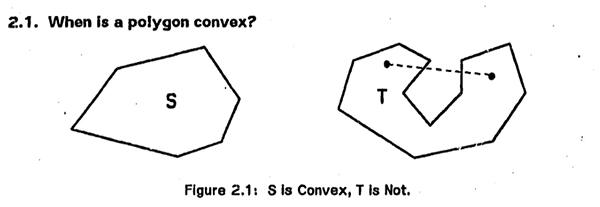Algorithmic Roots of Geometry
Here are several passages from Shamos’s dissertation thesis, where he is studying the history of geometry from the perspective of a computer scientist. This topic always fascinated me. However, this is a good reading for the algorithmic roots of geometry.

“…Egyptian and Greek geometry were masterpieces of applied mathematics. It is well established that the original motivation for tackling geometric problems was the need to tax lands accurately and fairly and to erect buildings (Eves, 72)… Euclid’s chief contribution to geometry was his exposition of the axiomatic method of proof. More relevant to this discussion, however, is the invention of Euclidean construction. It is a scheme that consists of an algorithm and its proof, intertwined in a highly stylized format. The Euclidean construction satisfies all of the requirements of an algorithm: It is unambiguous, correct, and terminating…”
“…After Euclid, unfortunately, geometry continued to flourish, while analysis of algorithms faced 2000 years of decline. This can be explained in part by the success of reducto ad absurdum, a technique that made it easier for mathematicians to prove the existence of an object by contradiction, rather than by giving an explicit construction for it (an algorithm)… The Euclidean construction is remarkable for other reasons as well…”
Michael Ian Shamos, dissertation titled “Computational Geometry“, Yale University. 1978
Finally, this dissertation is full of in-depth examples of the relationship between problem-solving issues of geometry and its algorithmic roots. So, I believe that it is still very exciting to read after 34 years. I hope that I will read the rest of it as soon as possible. Also, I will try to write my opinions. Coding is a good language to express such studies. In designcoding, I will try my best to do so.








